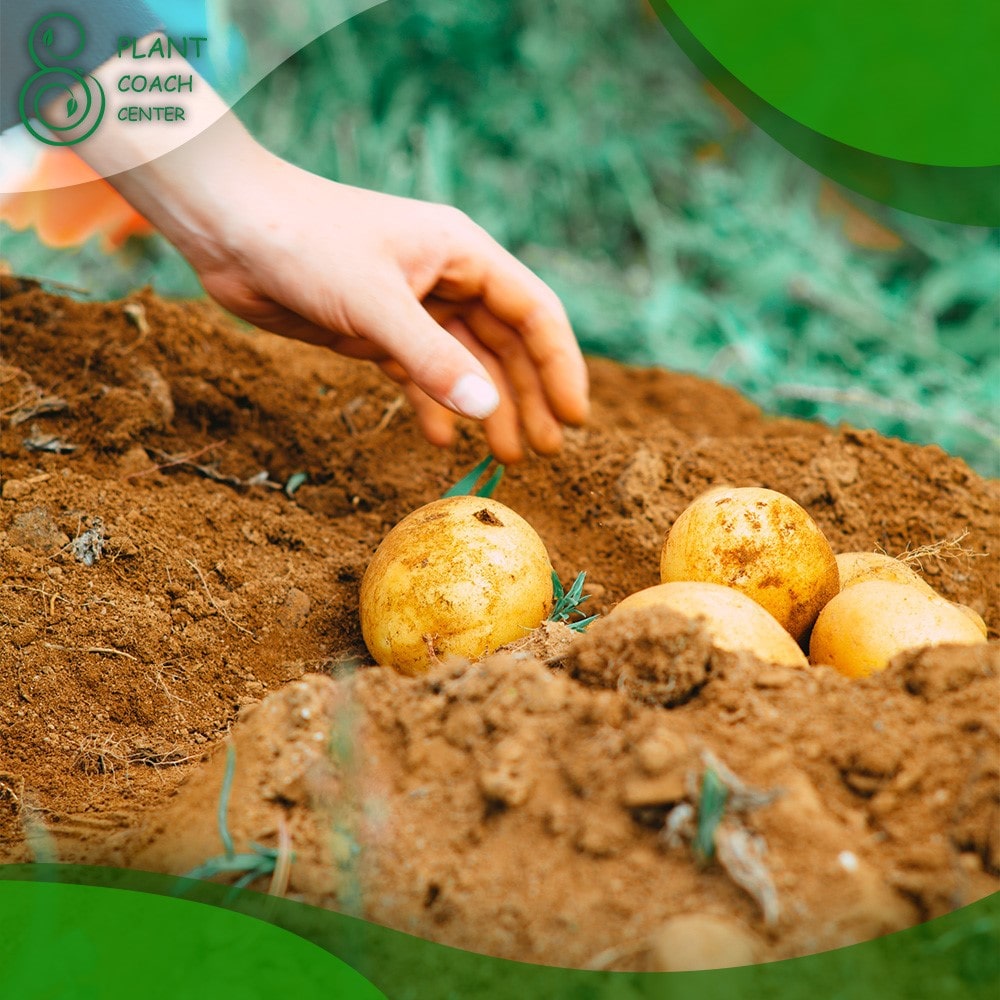When Do You Harvest Potatoes
Harvesting potatoes marks the culmination of a gratifying journey for growers, where the promise of earthy, nutrient-rich tubers is finally realized. As one of the most versatile and beloved crops worldwide, potatoes have woven themselves into the fabric of global cuisines, making their timely Harvest all the more essential. However, knowing precisely when to pluck these underground treasures from the soil is a skill that requires observation, experience, and a bit of horticultural intuition.
In this article, we embark on a spectacular adventure to uncover the secrets of potato harvesting. From deciphering the enigmatic signs of maturity to mastering the art of timing, we will delve into the intricacies of the potato growth cycle and arm you with the knowledge needed to reap a bountiful harvest.
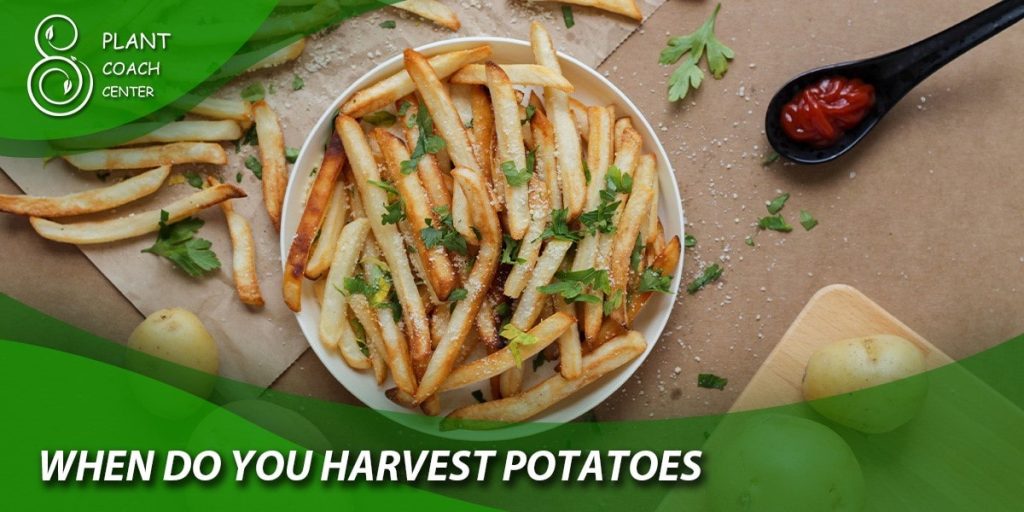
Whether you’re a seasoned potato enthusiast or a first-time grower with a penchant for the delectable tuber, this guide will equip you with insights into environmental influences, variety-specific considerations, and post-harvest care to ensure your spuds reach their full potential in flavor, texture, and storability. So grab your gardening gloves and join us as we unearth the magic of knowing precisely when to mine those coveted potatoes from the earth.
Unlocking the Mystery: Signs of Potato Maturity
Harvesting potatoes at the perfect moment is a skill that separates novice gardeners from seasoned experts. Fortunately, Mother Nature provides us with a treasure trove of clues to determine when these starchy delights are ready for the picking. Let’s embark on a journey to unlock the mystery of potato maturity and discover the telltale signs that indicate it’s time to unearth those spuds.
Foliage Changes
Observing the potato plant’s foliage is one of the primary indicators of its maturity. As the tubers develop underground, the plant’s foliage undergoes noticeable changes. Keep an eye out for the gradual yellowing and withering of the leaves. As the plant redirects its energy to the maturing tubers, the once lush and green foliage begins to fade, signaling that the potatoes are nearing their full potential.
Flower Appearance
Though not all potato varieties produce flowers, those can provide valuable insight into the maturity of the tubers. When potato plants enter the flowering stage, it indicates that the tubers are growing beneath the surface. The flowers themselves can be pretty beautiful, displaying shades of white, pink, purple, or blue. As the flowers bloom and fade, it’s a sign that the potatoes are developing and approaching harvest readiness.
Skin Texture
The skin texture of potatoes can also offer a clue about their maturity. Young, immature potatoes have thin, delicate skins that are easily damaged during Harvest. In contrast, mature potatoes have thicker, more robust skins that better protect the tubers during harvesting and storage. Run your fingers over the skin—if it feels firm and well-set on the potato, it’s likely ready for Harvest.
Reduced Plant Growth
As the potatoes near maturity, the overall Growth of the plant starts to slow down. This reduction in Growth is a natural response to the approaching harvest time. The plant focuses on completing the tuber development rather than putting energy into further vegetative Growth.
Tubers Stop Growing
During the latter stages of potato development, the tubers themselves stop growing. Once the tubers have reached their full size, they will not continue to expand, even if left in the ground for an extended period. Harvesting at this point ensures that you get the maximum yield from your potato patch.
Check the Days to Maturity
If you need clarification on the visual cues, refer to the maturity days provided on the seed packet or plant label. This estimate gives you a rough idea of when you can expect your potatoes to be ready for Harvest. However, remember that environmental conditions and variations in growing practices can affect the timing, so it’s essential to combine this information with the visual signs mentioned earlier.
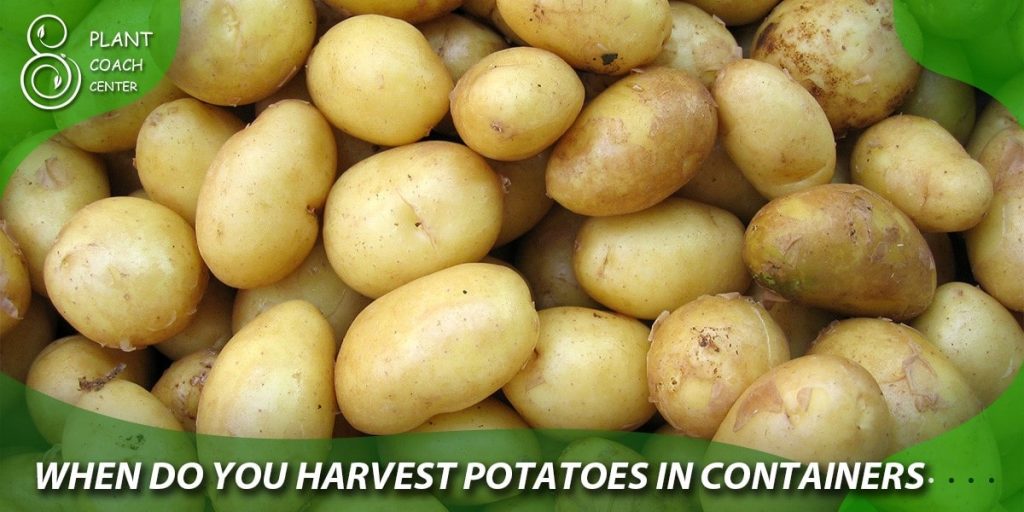
Timing is Everything: Understanding the Growth Cycle of Potatoes
Growing potatoes is a rewarding experience that requires a keen understanding of their growth cycle. From planting the seed potatoes to harvesting the mature tubers, each stage plays a crucial role in determining the quality and quantity of your Harvest. Let’s explore the fascinating growth cycle of potatoes and the essential considerations for each phase.
Pre-Planting Preparations
Before delving into the growth cycle, proper pre-planting preparations set the stage for success. Choose a sunny spot in your garden with well-draining soil to ensure optimal growing conditions. Prepare the ground by removing debris, loosening the earth, and incorporating organic matter to promote healthy root development.
Planting Seed Potatoes
The growth cycle begins with planting seed potatoes. Select high-quality seed potatoes free from disease and cut them into smaller pieces, ensuring each contains at least one “eye” or bud. Allow the cut pieces to dry for a day or two to prevent rotting. Plant the seed potatoes in shallow trenches or mounds, with the eyes facing upward. Cover them with a few inches of soil.
Sprouting and Emergence
In the weeks following planting, the seed potatoes will sprout and emerge from the soil as young potato plants. As they appear, hill up the soil around the stems to encourage strong root development and protect the emerging plants from frost damage.
Vegetative Growth
During this stage, the potato plants focus on vegetative Growth. Lush green foliage develops, and the plants draw nutrients from the soil to support the growth of stems and leaves. This phase is crucial for regular watering, adequate sunlight, and proper soil nutrition.
Flowering and Tuber Formation
As the plants grow, some potato varieties may produce beautiful flowers. However, not all potato varieties exhibit this trait. The flowering stage marks the beginning of tuber formation underground. The developing tubers draw nutrients from the plant’s energy reserves and the soil.
Tuber Bulking
Tuber bulking is a critical phase when the potatoes rapidly increase in size. During this stage, the tubers depend heavily on the nutrients and water absorbed by the plant. Adequate and consistent moisture levels are essential to support the tuber’s Growth and prevent issues like cracked or misshapen potatoes.
Maturity and Harvest
As the potato plants near maturity, the foliage begins to change color and eventually withers. At this point, the tubers have reached their full size and are ready for harvesting. The timing of Harvest is crucial, as leaving the potatoes in the ground for too long can lead to over-ripening and declining quality.
The Finger Test: Mastering the Art of Potato Harvesting
While observing the visual cues of potato maturity is vital, seasoned gardeners swear by an ancient and practical method—the finger test. This tactile approach involves delicately feeling the soil and tubers with your fingers to assess the readiness of your potatoes. Mastering the finger test can be a game-changer for your potato harvest. Here’s how you can become a pro at this time-tested technique:
Understanding the Finger Test
The finger test involves gently digging around the base of the potato plant with your fingers to expose some of the tubers. By feeling the potatoes’ size, texture, and Firmness, you can gauge their maturity. This hands-on approach provides more accurate information than relying solely on visual cues.
Timing the Finger Test
To conduct the finger test, wait until the potato plants have entered the flowering stage. This is typically the time when tubers start forming underground. Performing the test too early might yield immature potatoes while waiting too long could result in over-mature or overgrown tubers.
Gently Digging In
Locate the base of the potato plant and carefully dig around the area with your fingers. Avoid using tools that could damage the tender tubers accidentally. Be gentle to prevent bruising the potatoes during the examination.
Evaluating Potato Size
Feel the size of the exposed potatoes. They need more time to grow if they are small and only about the size of a golf ball or smaller. Conversely, if the potatoes are larger and have reached a desirable size for the specific variety you are growing, they are likely ready for Harvest.
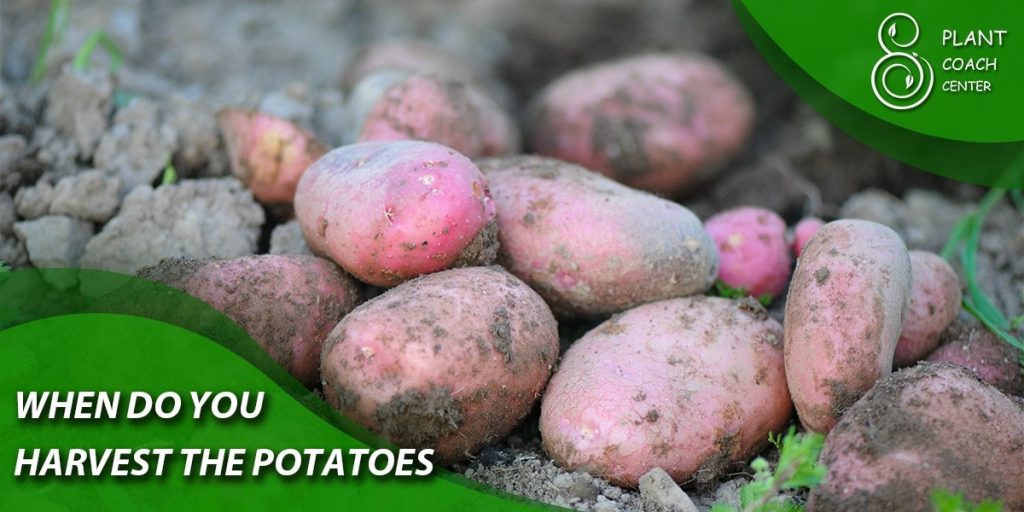
Assessing Skin Texture
The finger test also involves evaluating the skin texture of the potatoes. Mature potatoes have thicker and more firmly attached skin compared to younger ones. The potatoes might still be too young if the skin appears too thin or rubs off easily.
Determining Firmness
A crucial aspect of the finger test is assessing the Firmness of the potatoes. Gently press your fingers against the tubers. Feeling firm and well-set is a positive sign that they are mature and ready to be harvested. However, if they feel soft or yield easily to pressure, they might still need to be fully developed.
Environmental Factors and Harvesting Success
Potatoes are hardy and adaptable plants, but they are also influenced by the environment in which they grow. Understanding the impact of environmental factors on potato growth and Harvest is essential for maximizing your yield and ensuring the best quality tubers. Here are some key environmental factors to consider for a successful potato harvest:
Temperature
Temperature plays a critical role in potato growth, and extremes in either direction can affect the Harvest. Potatoes thrive in cool to moderate temperatures between 60°F to 70°F (15°C to 20°C). Cooler temperatures during the growing season promote tuber development, while excessive heat can stress the plants and lead to reduced yields. Additionally, frost can damage or kill potato foliage, so be cautious about late spring or early fall frosts that could impact your crop.
Moisture
Potatoes require consistent and adequate moisture throughout their growth cycle. Proper watering is especially crucial during tuber bulking, as this stage is when the potatoes rapidly increase in size. Insufficient water can result in stunted or misshapen tubers, while overwatering may cause rot or fungal diseases. Aim to keep the soil moist but not waterlogged to support healthy potato growth.
Soil Quality
The soil in which potatoes grow dramatically influences their development. Well-draining, loose soil with good aeration prevents waterlogging and promotes root health. Rich, fertile soil with organic matter provides the nutrients for vigorous Growth. Conduct a soil test before planting to ensure the pH and nutrient levels are appropriate for potatoes.
Sunlight
Potatoes are sun-loving plants and require ample sunlight for optimal Growth. Ensure your potato patch receives at least six to eight hours of direct sunlight daily. Insufficient sunlight can lead to weak and spindly plants, negatively impacting tuber formation and yield.
Pest and Disease Management
Environmental factors can also influence pest and disease pressure in your potato patch. Warm and humid conditions can create favorable environments for pests like Colorado potato beetles and diseases like late blight. Regular monitoring and appropriate pest management strategies, including crop rotation and using disease-resistant potato varieties, can help mitigate these challenges.
Timing of Harvest
Lastly, environmental factors influence the timing of your potato harvest. Factors like temperature and soil moisture can affect the maturity rate of the tubers. Harvesting during dry weather can make it easier to dig up potatoes without causing damage. Additionally, consider gathering a bit earlier to prevent rot and disease issues if you anticipate prolonged wet or rainy conditions.
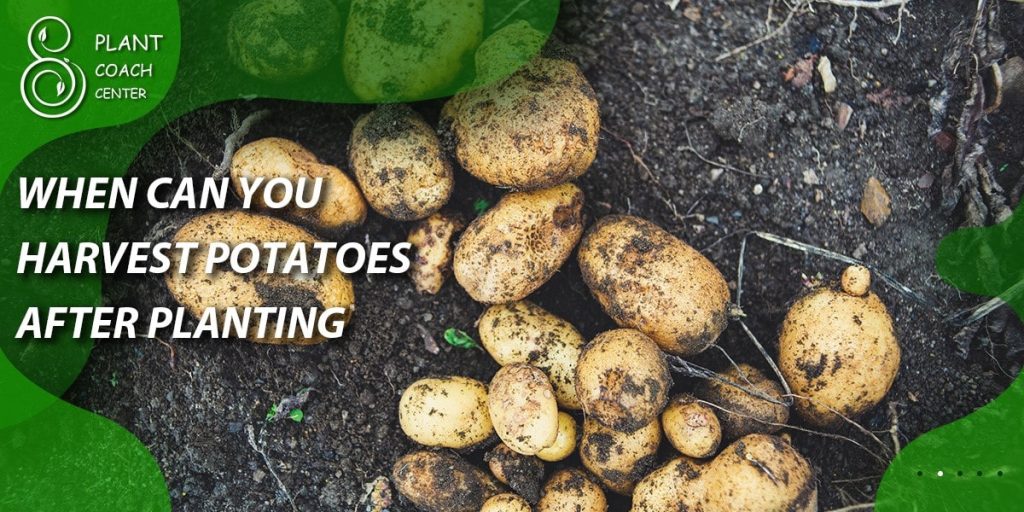
Harvesting Varieties: A Race Against Time
In the world of potatoes, the diverse range of varieties available presents both a delightful challenge and an exciting opportunity for growers. Each potato variety has unique characteristics, including taste, texture, and maturity rates. Understanding these variations is crucial, as it can turn potato harvesting into a race against time. Let’s explore the dynamic relationship between potato varieties and the strategies to manage a multi-variety potato patch successfully:
Early Maturing Varieties
Early maturing potato varieties are the sprinters of the potato world. These spuds reach maturity relatively quickly, typically between 70 to 90 days after planting. They are ideal for gardeners seeking a quick harvest or those living in regions with faster growing seasons. Be vigilant with early maturing varieties, as their tubers can become ready for Harvest almost immediately. Monitor their progress closely to make sure they get the prime harvest window.
Mid-Season Varieties
Mid-season potato varieties occupy a middle ground in maturity rates, taking around 90 to 120 days to reach harvest readiness. These varieties balance early and late maturing types, giving growers a more extended harvesting window. It allows for a steadier supply of fresh potatoes over time, easing the pressure to harvest everything at once.
Late Maturing Varieties
Late-maturing potato varieties are the marathoners, requiring the most time to reach maturity—usually 120 days or more. Patience is vital when growing these varieties, as their harvest season may extend well into the fall. Late-maturing potatoes often have excellent storage capabilities, allowing you to enjoy your homegrown spuds throughout the winter months.
Managing Harvest Timing
Harvesting multiple potato varieties demands careful planning and management avoid an overwhelming glut or the risk of leaving some types in the ground for too long. One approach is to stagger your planting dates based on the maturity rates of your chosen classes. This way, you can spread out the Harvest and avoid a massive influx of potatoes all at once.
Record Keeping
Maintaining accurate records of planting dates, expected maturity times, and harvest dates for each variety is a valuable practice. Detailed descriptions help you anticipate when each type will likely be ready for Harvest and ensure you don’t miss the optimal window.
Flexibility and Adaptability
Mother Nature often has her plans, and unexpected weather events or variations in growing conditions can impact potato growth. Flexibility and Adaptability to changing circumstances are essential when managing a multi-variety potato patch. Be prepared to adjust your harvest schedule based on real-time observations and the conditions on the ground.
Conclusion
In conclusion, mastering the art of potato harvesting is a multi-faceted journey that combines keen observation, environmental awareness, and strategic planning. Understanding the signs of potato maturity, the growth cycle, and the impact of ecological factors empowers growers to make informed decisions and achieve a bountiful harvest.
The finger test adds a hands-on dimension to the process, allowing growers to fine-tune their timing for optimal potato picking. Additionally, managing the diverse varieties of potatoes in a patch becomes a delightful challenge, requiring careful planning and flexibility to ensure each mixture reaches its full potential. Equally vital is post-harvest handling, which determines the longevity of flavor and shelf life of these precious tubers.
By following proper curing, sorting, and storage practices, growers can savor the delicious flavors of their homegrown potatoes well into the year. So, whether you’re a seasoned potato enthusiast or a curious first-time grower, remember that the journey of potato cultivation offers endless rewards. For more gardening tips and expert advice, visit PlantCouchCenter.com, your go-to resource for potatoes and beyond. Happy harvesting and happy feasting!
How do I know when my potatoes are ready for Harvest?
Look for visual cues like yellowing foliage, flowering, and firm skin. Conduct the finger test by gently feeling the tubers to assess maturity.
What are early, mid-season, and late-maturing potato varieties?
Early varieties mature in 70-90 days, mid-season in 90-120 days, and late varieties in 120+ days after planting.
How should I store harvested potatoes for maximum shelf life?
Cure the potatoes for two weeks in a cool, dark place, then store them in a well-ventilated area at 40°F to 50°F (4°C to 10°C) in wooden crates or mesh bags.


